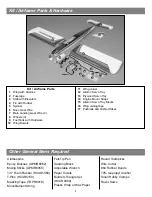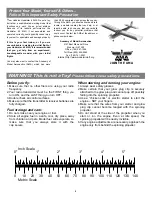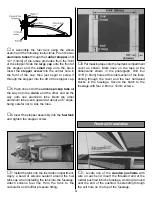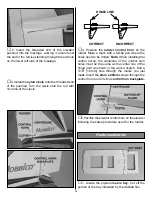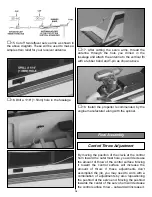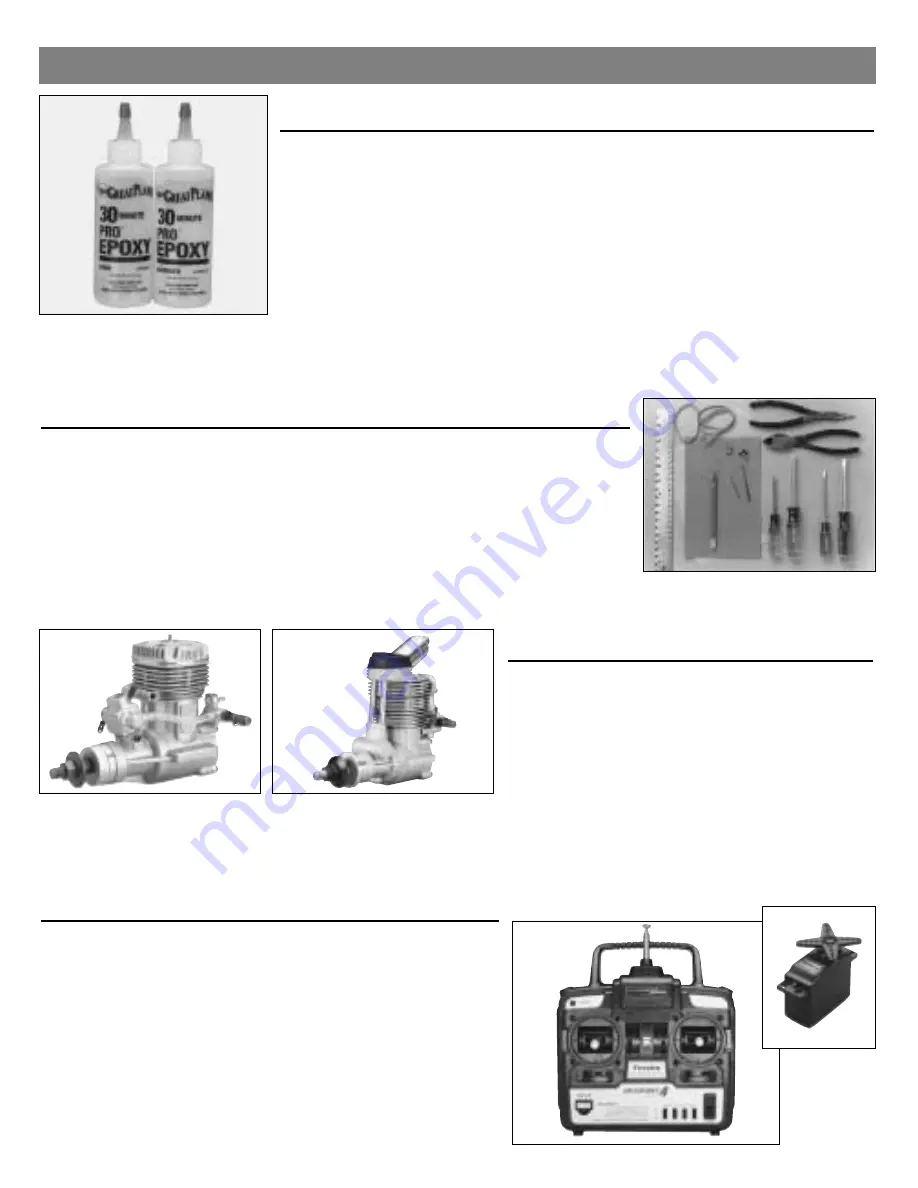
4
Other Items You’ll Need:
Glues
Choose 6-minute and 30-minute epoxy, such as Great Planes
®
Pro
™
Epoxy,
which has been formulated especially for R/C model building. Pro Epoxies
offer a strong bond and a variety of curing times suited for every step of
assembly. You’ll also need a thin instant-setting CA (cyanoacrylate),
medium CA+, plus rubbing alcohol for easy epoxy cleanup. Great Planes
Pro Threadlocker is also recommended to secure threaded fasteners.
Model Engine
Power your Hobbistar .60 MKII with a hot
2-stroke such as an O.S
®
. .61 FX. If you prefer a
4-stroke, an O.S. FS-91 is an ideal choice. Your
choice of 2-stroke or 4-stroke will determine the
location of the throttle servo and throttle pushrod
exit on the firewall, so plan ahead.
Radio Equipment
In selecting a radio system for your Hobbistar .60 MKII,
you’ll need at least a 4-channel radio system with four
standard servos. Many of the 4-channel radios offered
include only three servos, so it may be necessary to
purchase an extra servo along with your radio system.
The servos and receiver will be mounted on-board your
model and need to be cushioned from shock and
vibration. One-half inch thick foam rubber sheets
(HCAQ1050) are available from your hobby dealer for this
purpose.
Tools
Tools and accessories required for assembly include a hobby knife; small
and large Phillips screwdrivers; needle nose pliers; electric drill with 1/16"
[1.5mm] and 1/8" [3mm] bits; ruler; 2 feet of medium (3/32") fuel tubing;
and 150 to 200-grit sandpaper.



